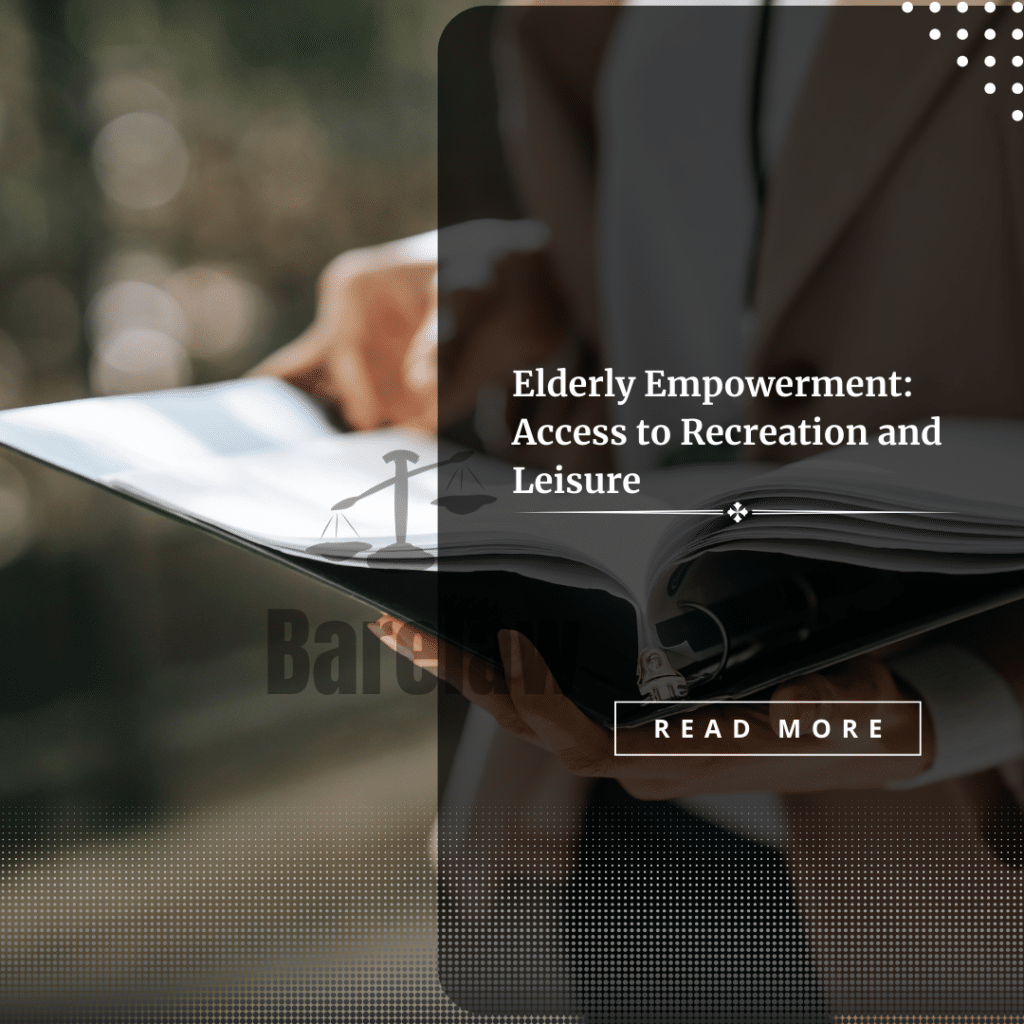
Table of Contents
Elderly Empowerment: Access to Recreation and Leisure
Elderly Empowerment: Access to Recreation and Leisure
Introduction
In an aging world, the rights and well-being of senior citizens are sacrosanct. This includes freedom to participate in recreational activities, access to public spaces and enjoyment of cultural events. The article looks at these rights as they regard older people and also discusses why it is so important to them that they have access to such rewarding experiences in order for them to lead full and active lives.
I. The Right to Recreation and Leisure
- Physical Health Benefits: Regularly engaging in leisure activities like exercise classes, swimming or dancing contribute greatly towards a seniors’ physical fitness since it helps older people maintain their mobility, balance, overall body health.
- Mental Health Benefits: Engaging in hobbies such as reading clubs or chess improves memory, social interaction while decreasing the risks associated with cognitive decline.
- Social Interaction: Social bonding is essential component of recreation that makes aged individuals not only feel lonely but also isolated from others.
- Quality of Life: Seniors can improve their quality of life by taking part in leisure activities which allow expression of happiness, relaxation and self-fulfillment.
II. Accessing Public Spaces
- Parks and Green Spaces: Older adults should be able to enjoy local parks and green spaces where these areas offer opportunities for outdoor activities like picnics or just relaxation.
- Community Centers: Senior-friendly community centers must be accessible with most amenities catered for this age group. They often organize programs, classes or social events designed specifically for them based on various interests and requirements.
- Public Transportation: Public transport systems should be available to allow seniors get access into recreational facilities, public spaces as well as cultural functions; thus ensuring their mobility plus independence.
III. Enjoying Cultural Events
- Theater & Performances: Elderly citizens are entitled to attend theater productions, concerts or any other cultural events because they provide them with valuable experiences making their respective communities culturally rich places.
- Museums & Art Galleries: Visiting museums and galleries is a way of seniors experiencing art, culture, and history. Such experiences could be made more enjoyable by having special provisions such as discounts on tickets or guided visits.
- Libraries & Cultural Programs: Public libraries commonly organize cultural programs, lectures and reading groups that are open to senior citizens. These areas also serve as learning environments for life.
IV. Challenges and Barriers
- Physical Accessibility: Many recreational facilities and public spaces are not equipped with enough ramps, handrails or elevators thus making it difficult for persons who have mobility impediments to use them.
- Financial Constraints: Subsidies or discounts are vital given the often limited financial resources available to seniors that can prevent their participation in paid recreation activities or attendance at cultural events.
- Transportation Challenges: The lack of affordable and accessible transportation isolates older adults from public places which hinders them from participating in various activities.
- Ageism and Stigmatization: Ageist attitudes may arise because people think about stereotypes like what elderly individuals are capable of doing or what they enjoy; thus limiting their chances of engaging themselves in areas of recreation and culture.
V. Empowering Seniors for Inclusive Leisure
- Age-Friendly Communities: Creating age-friendly communities involves the designing of spaces, programs as well as services meant to suit the needs and preferences of senior citizens hence promoting inclusive behavior towards this group.
Accessible Infrastructure: Well maintained walkways, ramps, elder friendly signage all make public spaces accessible through investment in accessible infrastructure.
Subsidized Programs: To ensure affordability among senior citizens many governments may provide subsidies or reduced fees so that they can join recreational activities.
Transportation Services: Enhancing accessibility to the recreational sites by improving on things like ramps on buses while dedicating some routes solely for old age homes can go a long way into improving seniors’ lives.
VI. Conclusion
Intergeneration exchanges among Senior Citizens in organizing recreational hobbies develop Social Harmony.
Moreover, providing older adults with possibilities for leisure activities and entertainment not only enhances their mental and physical health but also adds wisdom from the past to our society. Age friendly environments that address barriers in terms of accessibility as well as enhancing a culture that promotes respectfulness as well as recognition will enable our elders experience fulfilled and vibrant lives hence contributing to the rich diversity within our communities for decades now.





